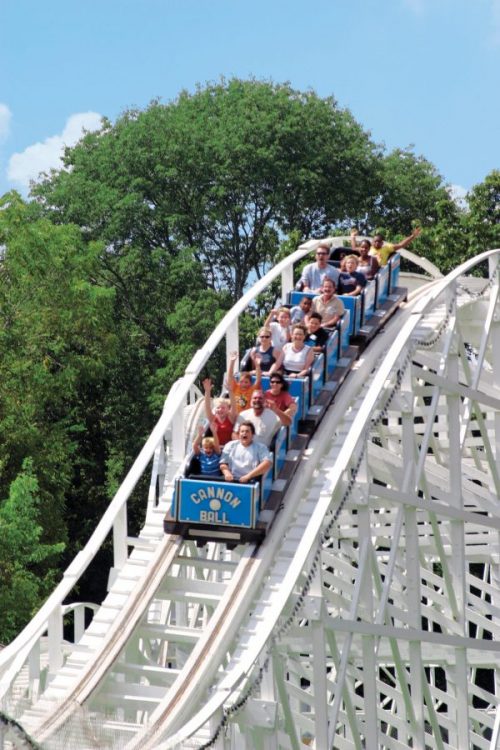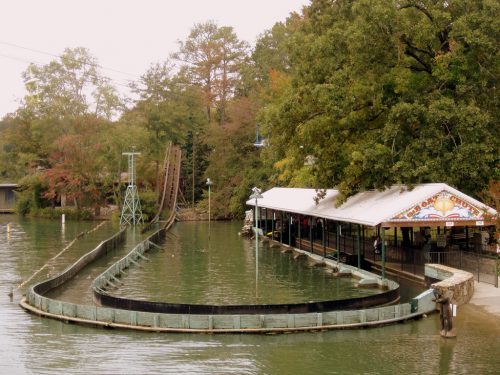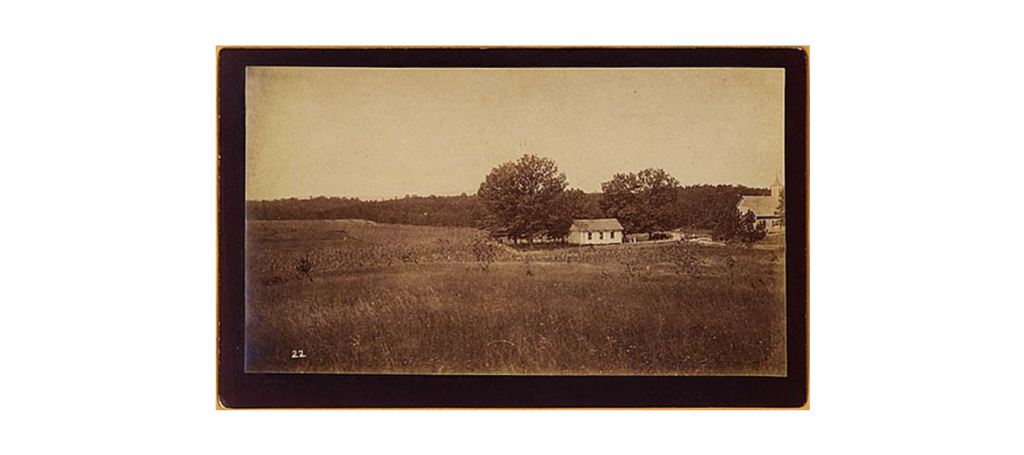
Lake Winnepesaukah Amusement Park, Past & Present
Lake Winnepesaukah Amusement Park outside of Chattanooga is a celebrated symbol of small-town Americana. Founded in 1926 by Carl and Minette Dixon, the park’s historic charm continues to draw visitors from both near and far.
The Dixons purchased the 100-acre park and 9-acre spring-fed lake in 1924, and “Lake Winnie” opened to the public May 30, 1925. Originally, the park included a 22,000-square-foot swimming pool – the South’s largest at the time – and featured areas for picnicking, boating and fishing.

Today, the swimming pool is gone (replaced by the Wacky Factory and carousel), and the family-owned-and-operated facility features 40 rides and attractions, as well as the new water park, SoakYa. However, visitors can still step back in time to enjoy some of the park’s earliest attractions.
The Boat Chute – the park’s first ride, built by Carl Dixon during the winter of 1926 – is still in operation and serves as the last mill chute water ride in the United States, according to the National Amusement Park Historical Association.
Other historic rides include: the carousel, which was built in 1916 and came to Lake Winnie in 1967 from Lakewood Park in Atlanta; the Cannonball Roller Coaster, a wooden coaster built in 1967 and recognized around the world by coaster enthusiasts for its vertical drop and speeds of up to 50 miles per hour during the one-minute, 32-second ride; and the beloved Birthday Cake Pavilion, which was constructed in 1948.

History at Lake Winnie
The park’s history spans way beyond its legacy of amusement. Small markers within the landscape reveal a cultural heritage that predates Lake Winnie’s 20th-century beginnings.
To begin, Lakeside Drive was once part of the historic Old Federal Road, an important 19th-century route for travelers through the Cherokee Nation, which consisted of parts of Southeast Tennessee, Alabama, Georgia, South Carolina and North Carolina. Later, the Old Federal Road was used during the Trail of Tears, the route the government used to forcibly remove the Cherokee people from their homeland in the Southeast.
 You won’t see a historical marker, but if you take Lakeview Drive from Rossville Boulevard toward Lake Winnie, you will be traveling on the historic section of the Old Federal Road, according to Jim Ogden, chief historian at Chickamauga and Chattanooga National Military Park.
You won’t see a historical marker, but if you take Lakeview Drive from Rossville Boulevard toward Lake Winnie, you will be traveling on the historic section of the Old Federal Road, according to Jim Ogden, chief historian at Chickamauga and Chattanooga National Military Park.
The natural spring that defines Lake Winnie (today it’s called Green’s Spring Lake) served as an important water source throughout time. The spring was called Newnan Springs prior to the Civil War, and a historical marker along the park’s Lakeside Drive border honors its namesake: Gen. Daniel Newnan (1780-1851), a veteran of the War of 1812 who served as secretary of state from 1825 to 1827 and as a U.S. congressman from 1831 to 1833.
Newnan’s home was located near the site of Lake Winnie today. He died at his home in January 1851, and his grave is located across the street at Newnan Springs United Methodist Church Cemetery on Page Road in Rossville.
During the Civil War, McAfee Church was located on the property, and the spring was known as McAfee’s Spring. According to a Civil War sites assessment by the Chickamauga and Chattanooga National Military Park, Union troops occupied McAfee Church and its vicinity in September 1863. Several skirmishes took place nearby, and a field hospital was established at the church. Soldiers later wrote about filling their canteens with water from the spring.

So next time you are swinging, spinning, splashing and screaming with amusement at Lake Winnepesaukah, take a moment to imagine how much has taken place at this site through the years.








